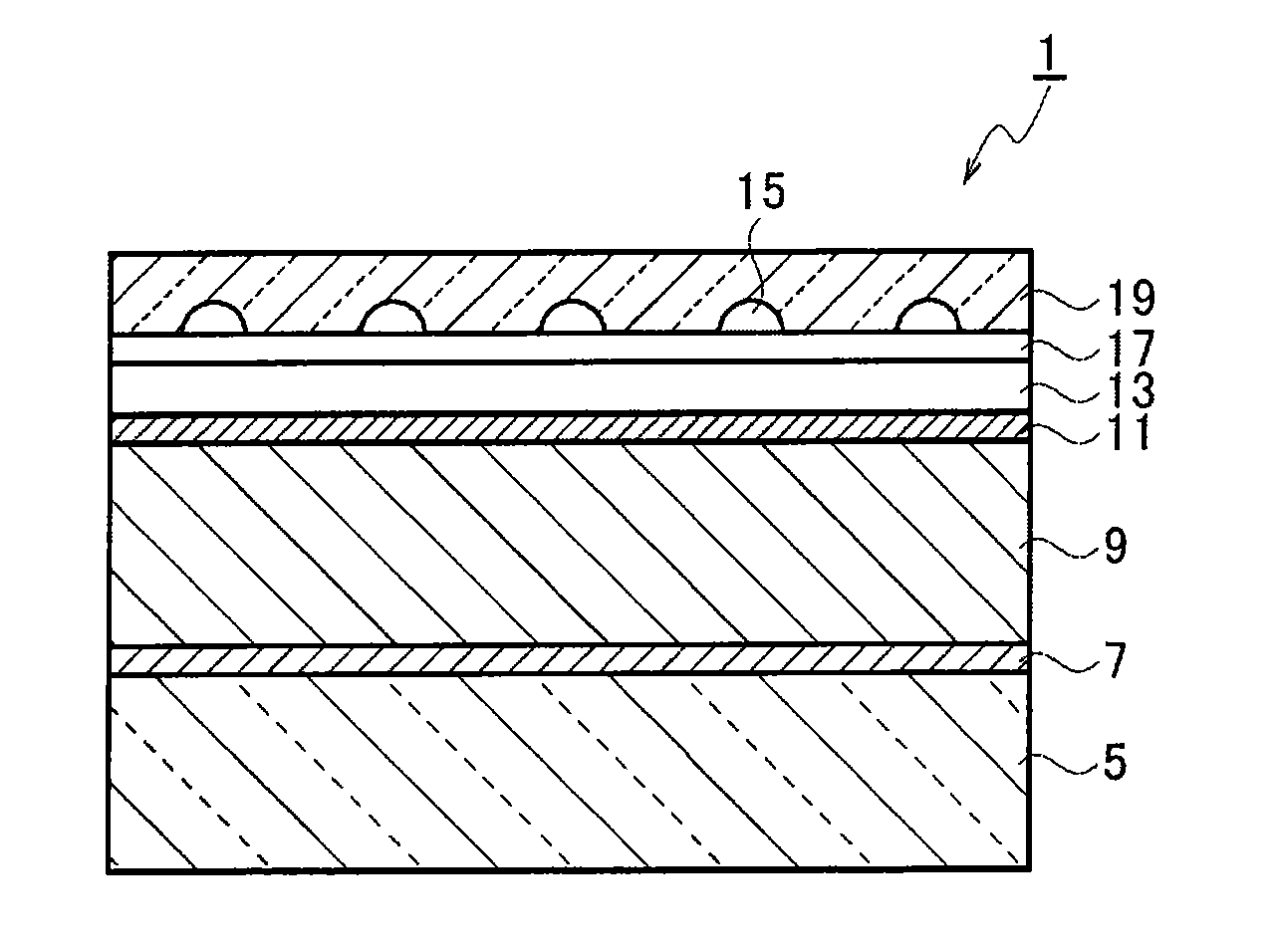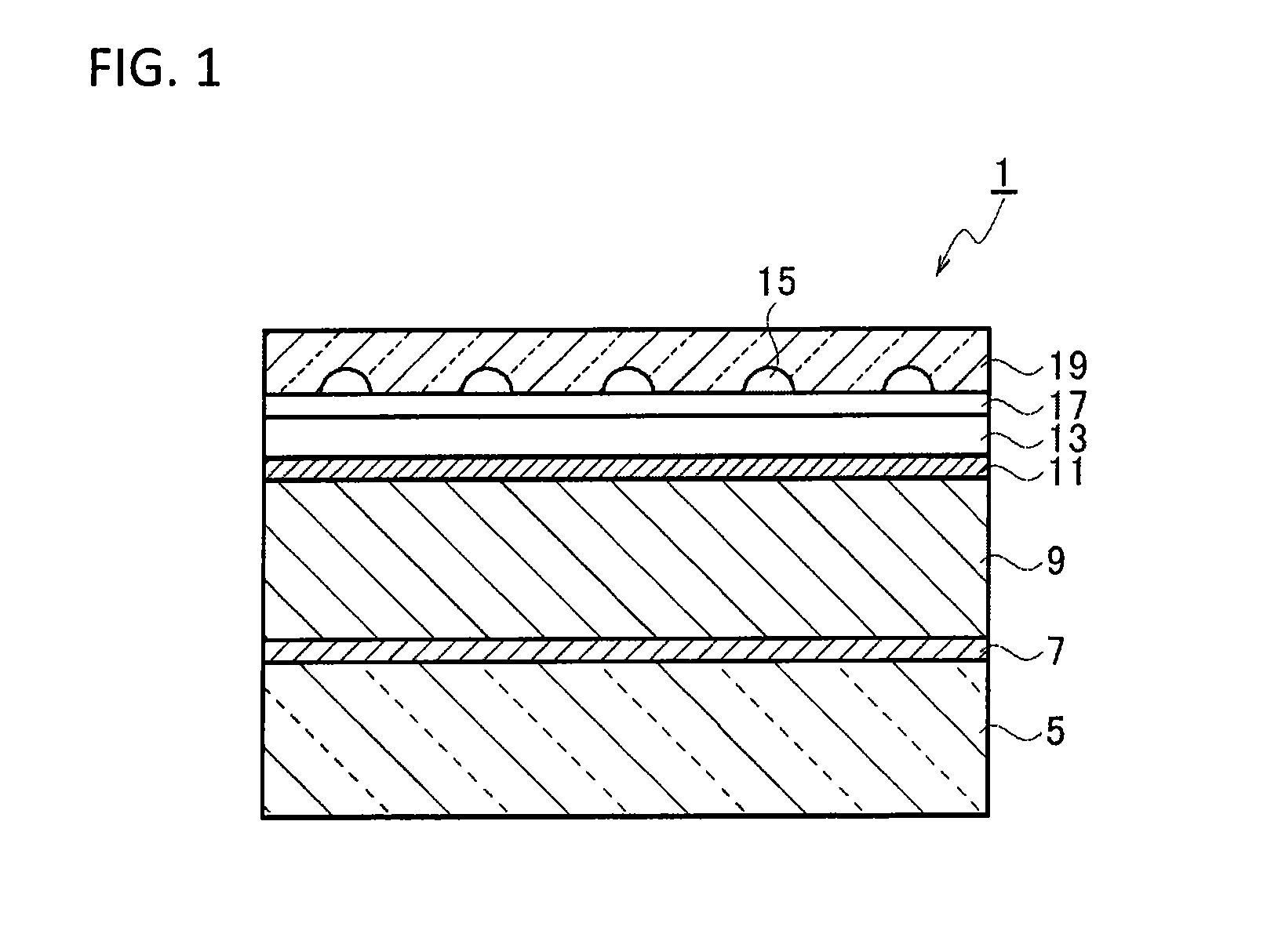Glass substrate for cu-in-ga-se solar cell and solar cell using same
- Summary
- Abstract
- Description
- Claims
- Application Information
AI Technical Summary
Benefits of technology
Problems solved by technology
Method used
Image
Examples
examples
[0177]The present invention is described in more detail below with reference to the following Examples and Manufacturing Examples, but it should not be construed that the present invention is limited to these Examples and Manufacturing Examples.
[0178]Examples (Examples 1 to 35) of the glass substrate for a CIGS solar cell of the present invention and Comparative Examples (Examples 36 to 42) are described. The numerical values in the parentheses in Tables 1 to 6 are calculated values.
[0179]Raw materials of respective components were made up so as to have a composition shown in Tables 1 to 6, a sulfate was added to the raw materials in an amount of 0.1 parts by mass in terms of SO3 per 100 parts by mass of the raw materials of the components for the glass substrate, followed by heating and melting at a temperature of 1,600° C. for 3 hours using a platinum crucible. In melting, a platinum stirrer was inserted, and stirring was performed for 1 hour, thereby homogenizing the glass. The m...
PUM
| Property | Measurement | Unit |
|---|---|---|
| Temperature | aaaaa | aaaaa |
| Temperature | aaaaa | aaaaa |
| Temperature | aaaaa | aaaaa |
Abstract
Description
Claims
Application Information
 Login to View More
Login to View More - R&D
- Intellectual Property
- Life Sciences
- Materials
- Tech Scout
- Unparalleled Data Quality
- Higher Quality Content
- 60% Fewer Hallucinations
Browse by: Latest US Patents, China's latest patents, Technical Efficacy Thesaurus, Application Domain, Technology Topic, Popular Technical Reports.
© 2025 PatSnap. All rights reserved.Legal|Privacy policy|Modern Slavery Act Transparency Statement|Sitemap|About US| Contact US: help@patsnap.com



